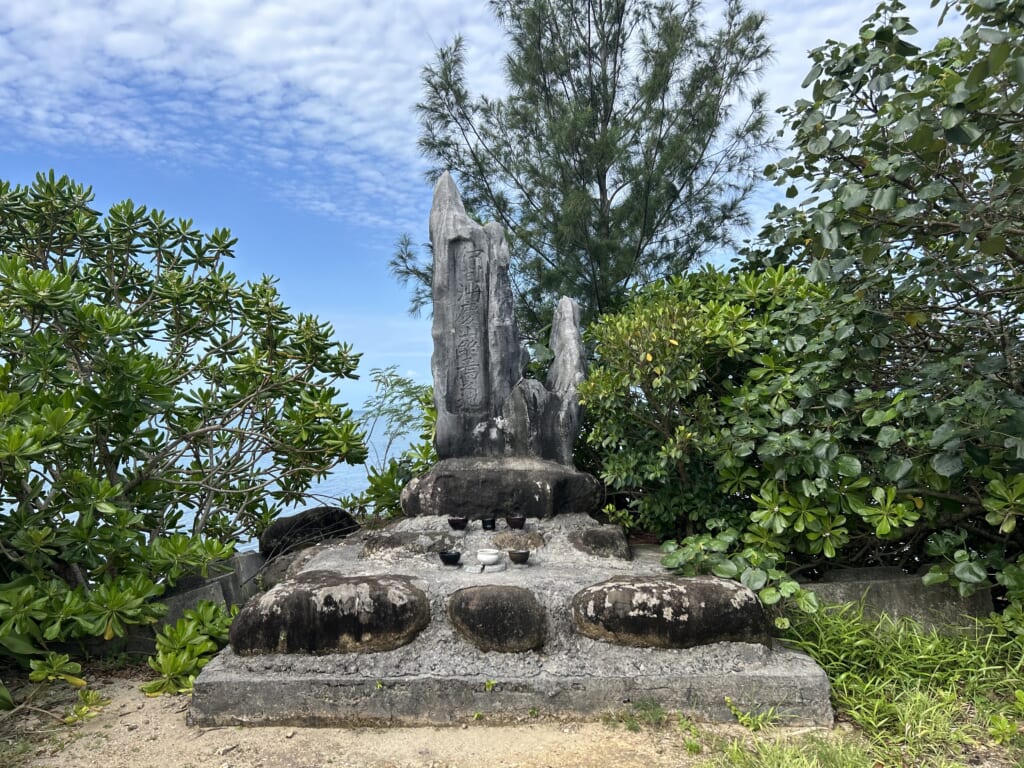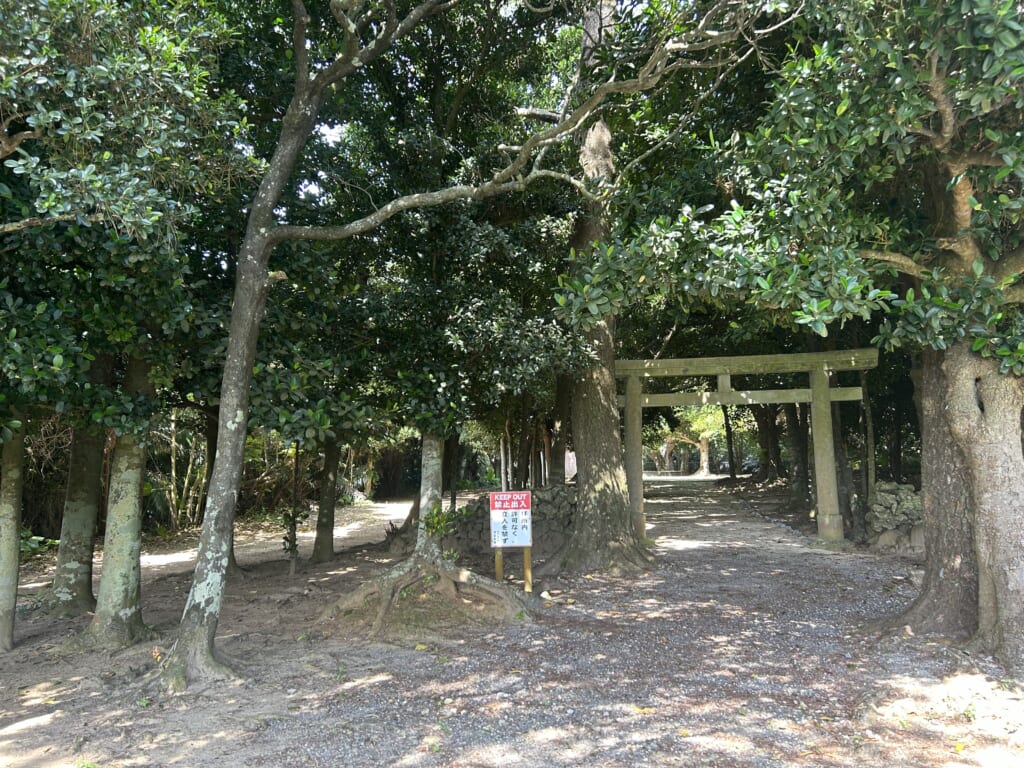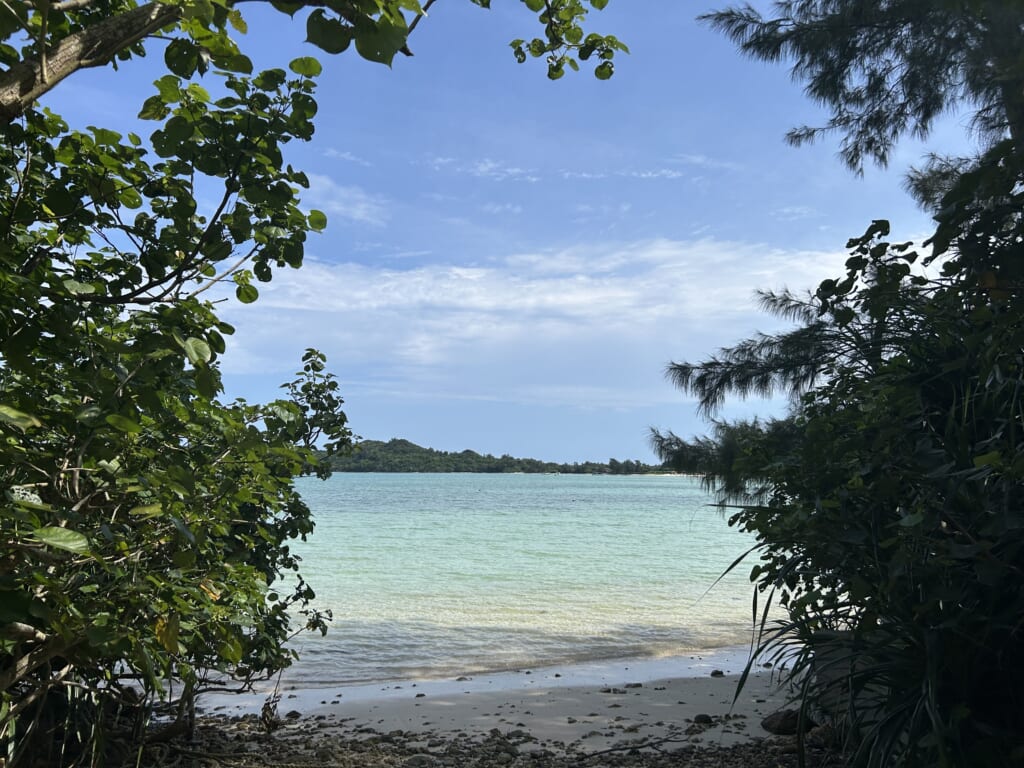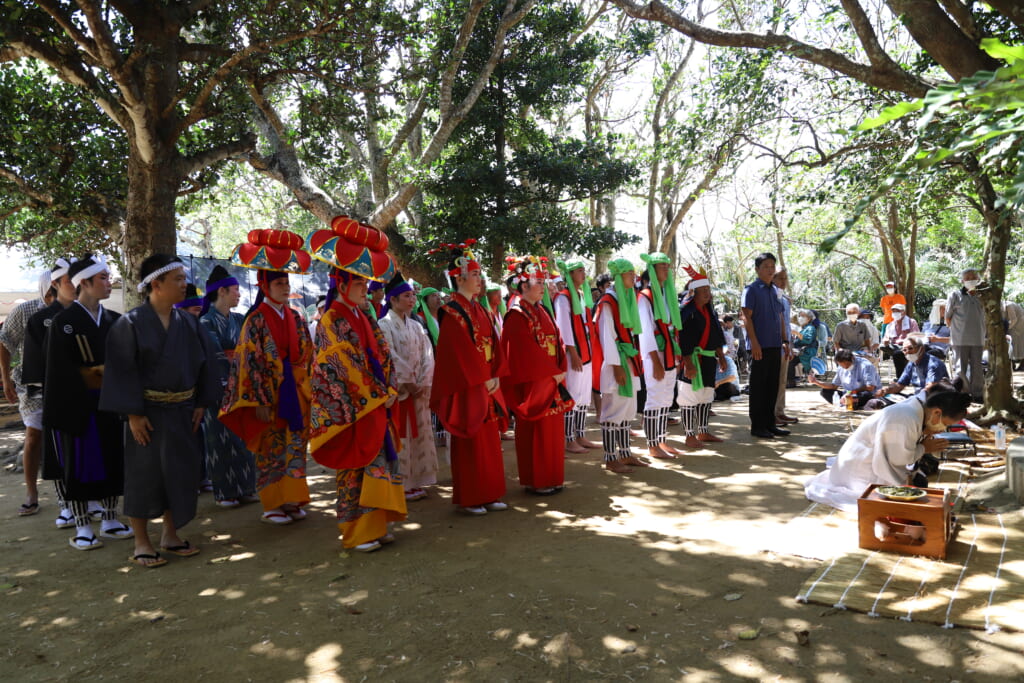Article by Ishigaki City Tourism Culture Division,Planning Department
Kabira, Ishigaki City, where beautiful nature meets a vibrant tapestry of cultural traditions
Kabira, known for its emerald green waters that evoke sighs of admiration, is a scenic destination located in the northwestern region of Ishigaki Island.
If you’ve been to Ishigaki Island, chances are you’ve explored Kabira Bay as well.
While Kabira is commonly recognized for its stunning seas, it’s also a region steeped in history and culture.

The Kitsugansai Festival, also known as Ganhodoki, brings together wishes for a bountiful harvest, prosperous offspring, and good health into one celebratory event.
During this festival, a variety of traditional performing arts are offered as a dedication.
The festival takes place annually or every few years at different locations across the Yaeyama Islands. In Kabira, it is regarded as one of the three major annual festivals.

The Kitsugansai Festival also symbolizes a visit of gratitude for answered prayers.
This festival is a celebration of gratitude for the successful harvest of crops and a prayer for a bountiful harvest, the health, and happiness of the residents in the coming year.
Following a night of seclusion and prayer by the Shinto priest at the Utaki, a vibrant array of performances unfolds within the Nnibushi-
on sacred site: communal dances, taiko drumming, Bojutsu (martial art using a staff called bō), lion dances, traditional dances, and Kyogen (traditional Japanese comic theater).
The taiko drumming tradition in Kabira has been passed down for approximately 350 years, while Bojutsu has a history of around 550 years, and the lion dance dates back approximately 500 years.
Especially noteworthy is the account of young villagers learning Bojutsu techniques directly from Nakama Mitsukeima, who was known for his unique style of stick and sword combat training during that era.
A formidable chieftain who ruled Kabira in the northwestern part of the island during the late 15th century when the Yaeyama Islands were divided among several powerful factions.
Nakama Mitsukeima Eikyoku, known for his expertise in archery and kendo since his youth, later became an instructor in Kabira Village. One of the notable events in the Yaeyama Islands at that time was the rebellion led by Oyake Akahachi of Ohama Village against the Ryukyu Kingdom, known as the Oyake-Akahachi Rebellion.
Mitsukeima, a man known for his strength and valor, was also asked to join the Oyake-Akahachi Rebellion. However, concerned about the Ryukyu Kingdom’s strength and the potential involvement of islanders in the conflict, he declined the request.
Following the meeting, Nakama Mitsukeima tragically lost his life during his journey home, falling victim to a surprise attack by Oyake Akahachi at Kera Cape in Nagura Bay.

It is said that he was either 32 or 33.
In Kabira Village, remnants of the Bojutsu technique believed to have been passed down by him still exist, along with monuments connected to Nakama Mitsukeima, located in the place where he was born (Seitan no chi) and the place where he died (Shuen no chi) His courage, loyalty, and strategic vision continue to be passed down, deeply ingrained in the village’s history, long after his passing.
A day trip bus tour to the Kegansai Festival will be held on September 15, 2024. This is a great opportunity to experience traditional ceremonies and culture. By joining this tour, you can fully enjoy the festival atmosphere without worrying about transportation. For more details and reservations, please check here.
Kitsugansai Festival × Nakama Mitsukeima’s Historical Exploration Tour



-1024x768.jpg)
-1024x683.jpg)
のお通り-1024x683.jpg)



